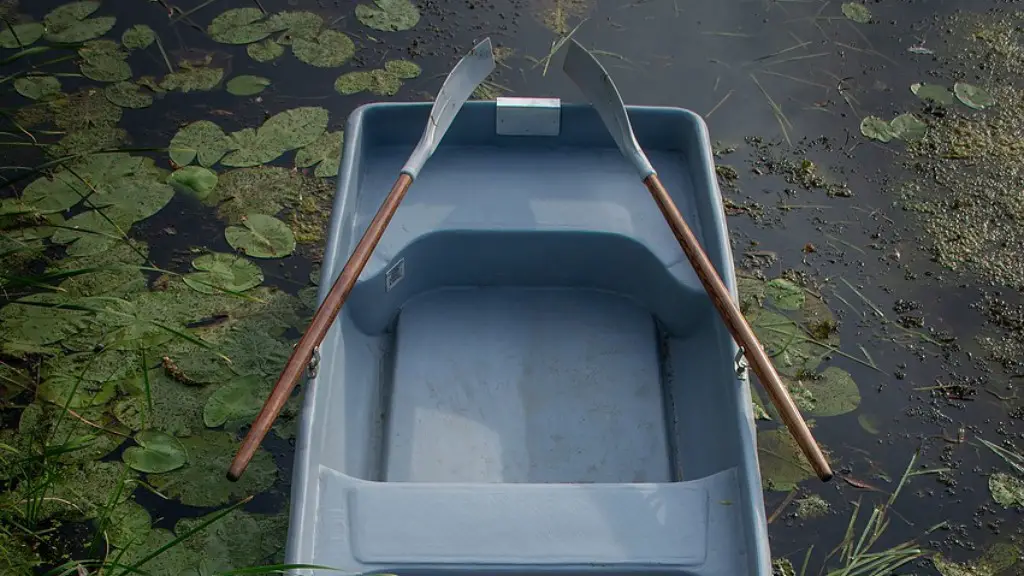Mining byproducts causing discoloration of Lake Superior
It may come as a surprise to many, but it is no coincidence that one of North America’s most prominent lakes is reddening at an alarming rate. Lake Superior, the largest of the Great Lakes by area, has suffered considerable environmental alterations over time, most of which can be attributed to nearby industry and human activity.In Canada and the United States, mining activity is primarily responsible for the change in hue, as its byproducts form a reddish sediment along the lake’s edges and beaches. This phenomenon is known as Iron Sheeting.
Most of this Iron Sheeting is a result of the added industrial waste due to strip mining and smelting. In strip mining, entire mountains are carved away to expose coal seams. Sediments containing iron are processed and spread along nearby bodies of water. The byproducts in question contain iron, which can oxidize over time and subsequently cause discoloration. Smelting is another very common industrial process that typically produces slag and certain other byproducts, a few of which contain iron in the form of hematite.
Iron Sheeting is an extremely damaging form of pollution, as it affects the entirety of Lake Superior’s aquatic ecosystem. According to research conducted by University of Minnesota Duluth and Wisconsin-based Institute of Environmental Studies (IES), iron impairs the development of photosynthesis by decreasing the amount of light passing through the water. This affects the production of primary nutrients and reduces the availability of oxygen for animals living in the lake.
Lake Superior is also home to a vast array of species and ecosystems, all of which require undisturbed water clarity in order to survive and flourish. As the level of iron sheeting increases, the amount of food available to fish decreases and their habitats become severely compromised. Consequently, populations of wild fish and other aquatic animals are prone to depletion. Furthermore, the IES also reported that it can take up to a hundred years for the water to naturally purify itself.
Human activity exasperating Iron Sheeting in Lake Superior
The mining industry is certainly not solely responsible for the extent of Iron Sheeting in Lake Superior. In fact, other forms of human activity have also been known to contribute to the situation. As such, environmental agencies and scientific organizations have identified numerous sources, including auto exhaust, leaking fuel and unsecured hazardous waste. Despite the fact that these practices are not as severe as the strip mining and smelting mentioned previously, the fact remains that their current contribution to the problem is still considered to be significant.
Additional pollutants can also runoff from nearby streets, sidewalks and other paved surfaces which further exacerbates the issue. Outdated sewer and water systems also exacerbate the pollution, as they are not equipped to properly filter out the byproducts from mining industry run-off. As a result, even treated wastewater from industrial sources still contains significant amounts of dissolved oxygen and other essential nutrients, which can be catastrophic for the entirety of the ecosystem.
Fortunately, Lake Superior does not suffer from the same level of overdevelopment as most other bodies of water. As such, the pollution caused by immediately adjacent industry is lessened, though it is still present. Moreover, the lake holds a vast array of unique species, many of which are necessary to the lake’s survival. These creatures can further reduce the levels of sheeting by naturally consuming it as food.
Governmental organizations attempting to staunch the Iron Sheeting
The environmental organizations and governments in both Canada and the United States have taken several measures to address the Iron Sheeting issue in Lake Superior. In Canada, the C-69 Water Policy outlines the acceptable levels of pollutants for recreational waters, with specific limits for potable water sources, such as the Great Lakes. In the United States, the Clean Water Act of 1972 sets detailed requirements for water quality and waste management, with a specific focus on reducing the levels of industrial and agricultural pollution.
Furthermore, both local and federal agencies work together to provide monitoring and enforcement of these laws. This involves regularly testing the water by sampling for different contaminants to detect any changes in their levels over time. Through this research, determining the exact extent of the Iron Sheeting phenomenon can be achieved and corrective actions can be taken to reduce its presence.
In addition to legal regulations, numerous organizations and research centers have collaborated to create solutions to help reduce the Iron Sheeting in Lake Superior. These include the formation of conservation studies and conservation groups, which examine the effects of various sources of pollution and seek to educate people on the need to conserve water. Furthermore, scientists have proposed various solutions to address the issue, such as the use of artificial wetlands and other filtration systems.
What you can do to help
Members of the public can take a variety of small steps to reduce Iron Sheeting in Lake Superior. One such action is to choose natural household cleaners as opposed to chemical-based ones, as these contain fewer hazardous substances which can eventually end up in the lake. Furthermore, one should inform themselves of the potential pollutants in their area and find ways to reduce their presence. For example, avoiding the use of pesticides and herbicides which contain certain chemicals which promote discoloration. Another method is to consume fish caught near the lake in moderation, as overconsumption can have a negative effect on the population.
Local environmental bodies also help to reduce Iron Sheeting in Lake Superior, such as through the reuse of iron from mining operations. Companies that are already mining iron ore and smelting iron can sign agreements with conservation groups to prevent the used iron from being discarded and put back into the lake. In conjunction with their own efforts, these organizations also encourage others to become responsible for their actions and prevent water pollution as well.
The potential long-term consequences of Iron Sheeting
In addition to the short-term problems that Iron Sheeting can cause in Lake Superior, the long-term consequences are also worrying. As the pollutants are consumed by the fish, amounts of iron will build up in their bodies, resulting in increased levels of toxicity. This can result in a variety of health problems, including digestive issues and organ damage, in humans who consume them. Additionally, certain pollutants can affect the reproductive cycles of certain species, leading to a reduction in numbers.
The presence of Iron Sheeting can also compromise the use of the lake, reducing the possibility of recreation and enjoyment. The changing pH levels, combined with the disappearance of certain species can create a less than optimal environment for swimming, boating, fishing and other activities.
It is also important to note that the discoloration does not stop at Lake Superior – it continues upstream with the Lake Michigan system, eventually reaching the Mississippi and other interconnected rivers. Thus, if left unchecked, Iron Sheeting can spread long distances and impact a great number of habitats.
The importance of taking action now
It is essential that immediate action is taken in order to stop the further spread of Iron Sheeting in Lake Superior. Instances of Iron Sheeting are becoming increasingly common across the globe, and it is only through preventative measures that the extent of this phenomenon can be contained. By raising awareness on the issue and collaborating with various organizations, individuals can contribute to the efforts of the governments to eventually eradicate Iron Sheeting in the Great Lakes.
As a result, it is important to educate oneself on the dangers of mining, smelting and other hazardous industrial activities on Lake Superior, as well as the potential for pollution from other sources. Through knowledge, cooperation and strong regulation, Lake Superior can be preserved and kept clean, and its waters maintained in an optimal state for generations to come.
Alternative cleaning solutions being developed
The universities and other scientific organizations are currently researching various solutions to the red discoloration problem in Lake Superior. Some of them propose using adsorption materials to remove Iron Sheeting, which works similarly to a sponge that is capable of absorbing various pollutants, including heavy metals.
In addition to this, scientists have proposed using artificial wetlands as a method of cleaning the lake, as they are capable of naturally extracting the pollutants from the water. Artificial wetlands have been successful in the past, and have been used to filter contaminated water in a cost-effective manner. Moreover, research has been conducted concerning plants and other natural organisms that can help reduce the levels of Iron Sheeting in the lake.
Finally, numerous companies are investing in the development of advanced water filtration systems, which process waste and other pollutants to remove the byproducts of Iron Sheeting from Lake Superior. These systems typically rely on specialized membranes that are capable of filtering out specific molecules and compounds, including iron. As such, they provide a reliable, long-term solution that can effectively reduce the levels of Iron Sheeting in the lake.
Public outreach initiatives to raise awareness
In order to ensure maximum efficiency in addressing the Iron Sheeting issue, environmental organizations and governmental agencies have been pushing forward public outreach initiatives. These include programmes such as “Friends of Lake Superior”, which are dedicated to raising awareness among locals of the importance of preserving the lake. Additionally, campaigns have been organized to encourage the public to reduce their consumption of the fish caught in the lake, as well as their consumption of pollutants emitted by industry and car exhaust.
The organizations have also been pushing forward culturally based solutions to further raise awareness of the issue. These solutions include films and documentaries about Lake Superior and the need for conservation, as well as interactive programs for children to spread the importance of maintaining clean water. Additionally, the lobbying of local and federal governments to take more stringent measures towards iron sheeting has been increased.
These initiatives have been instrumental in creating a greater sense of ownership of the lake among individuals, which can prove to be beneficial in staunching the Iron Sheeting issues. Every individual taking part in these programmes is able to contribute to the preservation of Lake Superior, and in some cases, gain a sense of personal satisfaction in helping the environment.
Conclusion
Taking the steps to reduce Iron Sheeting in Lake Superior is essential, lest the entire area become contaminated with potentially harmful toxins. Through changes in our own practices, collaboration with organizations and governmental initiatives, as well as utilizing advanced technologies, we can make a huge difference. It is only through collective action that we can begin to reduce the level of Iron Sheeting in Lake Superior, and ultimately preserve one of North America’s most cherished natural resources.





